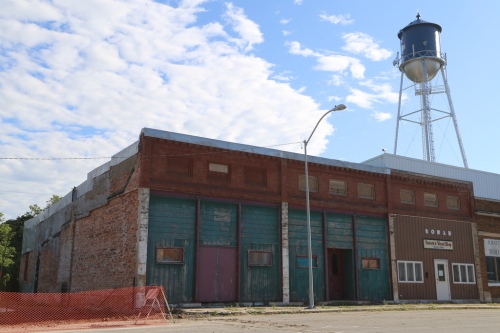
As a novelist I am very aware of the importance of setting. It is an essential part of of telling a story, to be able to set the stage upon which the characters will act out the plot. The setting pictured here is one created for my family’s on-going D&D Role-playing set in the campaign world of Eberron, here on the continent of Xendrick which was long ago ruled by magical giants. It is built around details. There are in this picture three elements that are actually aquarium decorations (the two jewel-eyed skulls and the Egyptian ruin construct in the background). The silver skull and the Princess Jasmine figure come from gumball vending machines (Jasmine comes from a vending machine in the hotel lobby in Anaheim when we took the kids to Disneyland). The thatch-roofed house in the background is from my manic urge to create cardboard castles. The skeleton-faced statue came out of a box of cheap plastic toys from Dollar Tree that Grandpa bought for my eldest son back in 1998. If there is any kind of point to this paragraph, it is that this detail-rich setting photo is created with unusual parts, parts that lots of people would not think to include in the world-building process.

If I have any claim at all to a talent for creating a good setting, it comes from my creative juxtaposition of widely disparate objects. (In English, it means I like to stick weird stuff together in the same place.) That, of course, is the very definition of surrealism. Making the bizarre seem natural and right. It is how you create a science fiction setting, a fantasy novel setting, and even a setting for a hometown novel set in the little Iowa town I grew up in during the 60’s and 70’s. (You might not fully believe me yet, as I have not published more than one of my hometown novels, but I do have a hometown setting made of a hidden fairy kingdom, a haunted house, a mad scientist’s laboratory, a witch’s hovel, a mysterious sea captain’s house, a house haunted by rumors of werewolves, and a connection to the dream lands that often lets other-worldly clowns wander our streets.) (That last now holds the record as the second-longest parenthetic expression I have ever used in my writing.)

Of course, setting by itself is meaningless. It must be interactive with the characters that inhabit it. As the dragon crashes through the castle wall behind them, Princess Aurora and her little mechanical body guard, Clockwerky, are not even facing it. Are they ignoring it because they are actually quite stupid? Or since it seems to be heading out of the scene to stage left, are they simply assuming it has to be somebody else’s problem? Either way the setting and the characters don’t mesh in a way that furthers the actual story… at least, not without a lot of additional explanation.
So, can I explain in any sort of a simple fashion how this 500 word treatise on setting is to be understood? Yes. Very simply, settings are built of details… lots of details. And settings and characters have to work together. Here endeth the lesson.

Mervin the Minotaur and Barrabas the Half-Ogre each roll a natural 20 to double-slay the dire elephant that was threatening princess Jasmine, while in the background, Oneorb the Cyclops rolls a 1 and bashes himself in the head.







